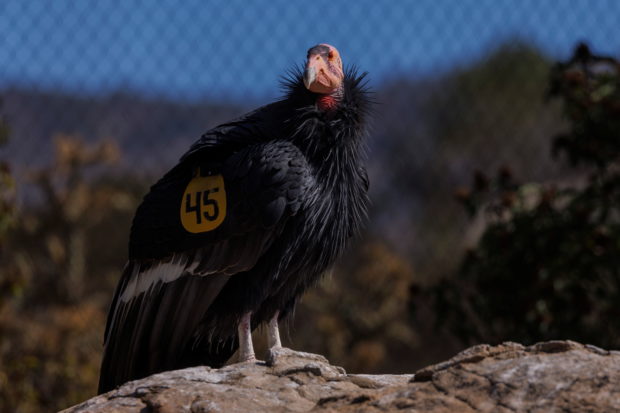Study shows condors, an endangered species, can reproduce without mating

A California Condor named Molloko is seen at the San Diego Zoo Safari Park after scientists at the San Diego Zoo Wildlife Alliance discovered two California condor chicks have hatched from unfertilized eggs, in Escondido, California, U.S., November 2, 2021. REUTERS
ESCONDIDO, California — California condors, a critically endangered species, can reproduce without mating, according to a study by conservation scientists at the San Diego Zoo Wildlife Alliance.
During a routine analysis of biological samples from the California condors in the zoo’s breeding program, the scientists found that two condor chicks had hatched from unfertilized eggs.
“It came as a big surprise, to be honest. We didn’t expect to find any of this,” said Cynthia Steiner, associate director for the alliance’s conservation research division.
Steiner is also the co-author of the study published last week in the Journal of Heredity, the official publication of the American Genetic Association.
Scientists confirmed that each condor chick was genetically related to its mother but neither bird was genetically related to a male. The two birds represent the first two instances of asexual reproduction, or parthenogenesis, to be confirmed in the California condor species, the zoo said.
Article continues after this advertisement“This is a very rare discovery because it’s not well-known in birds in general. So it’s known in other species, in reptiles and in fish, but in birds it’s very rare, in particular in wild species,” Steiner said.
Article continues after this advertisementSteiner said the discovery was particularly surprising, because both female birds were continuously housed with fertile male partners and had already produced chicks while paired with a male. Asexual reproduction has never before been confirmed in any avian species where the female bird had access to a mate.
“At some point they decided, for some reason, to go into asexual reproduction as well,” Steiner said.
Both chicks were underweight when they hatched, Steiner said. One was released into the wild and died at the age of two in 2003, while the other survived for eight years in captivity and died in 2017.
The California condor is one of the world’s rarest bird species, but its population is increasing. Steiner said there are now about 500 living condors, about 200 in captivity and 300 in the wild.
She hopes to keep studying asexual reproduction in the birds to see if it continues now that there are more condors in the wild.
“We just want to know how often this phenomenon might be happening now that the population is expanding instead of contracting as before in the 1980s,” she said.